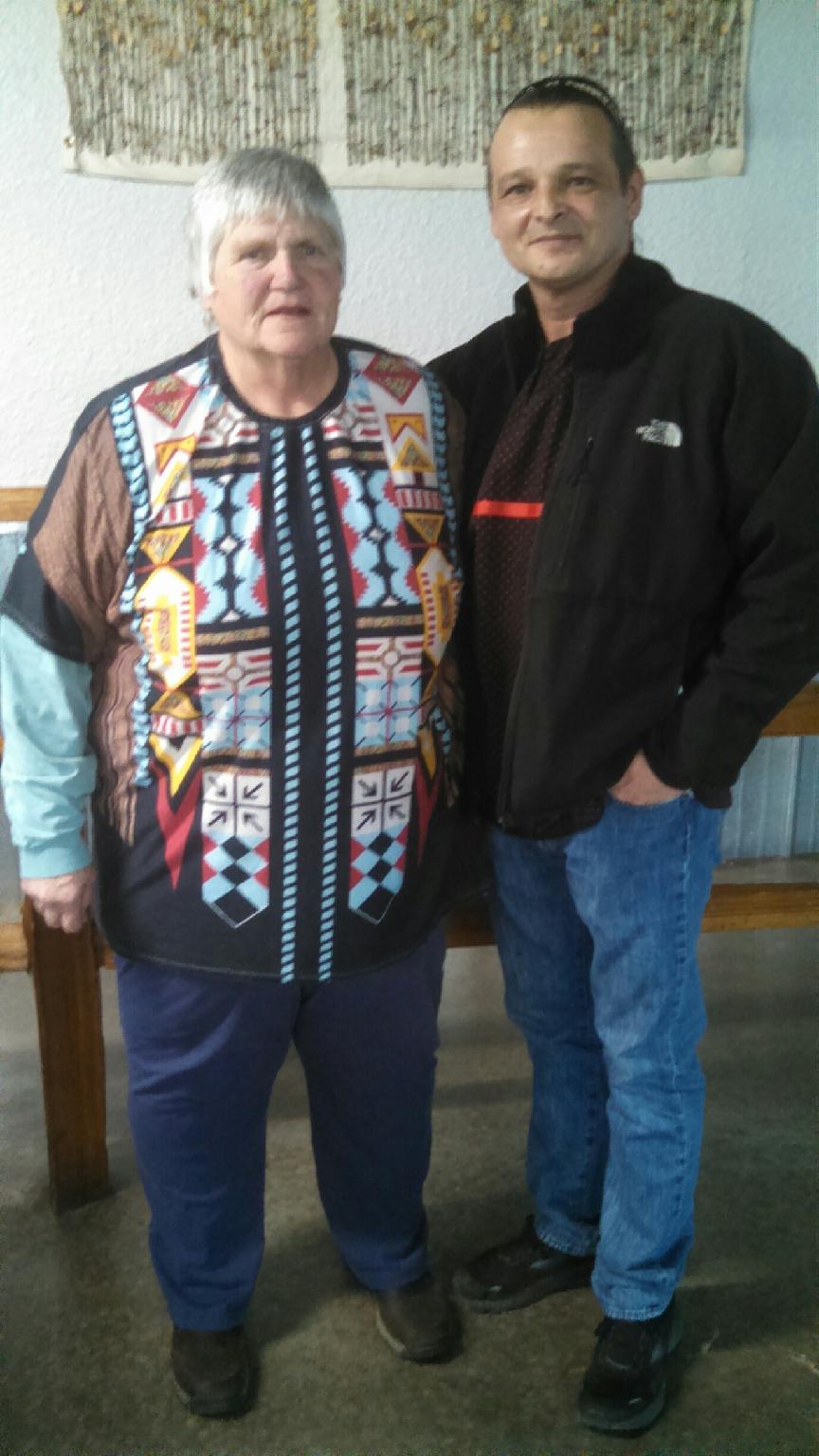Representing the Kaw Nation, Jason Murray, Blackwell, Oklahoma, spoke during the Back Country Horsemen of Kansas meeting in Council Grove.
At the Flint Hills Saloon and Eatery, Murray was introduced by Barb Stanbrough, local manager of Allegawaho Memorial Heritage Park south of town.
In a sentimental presentation, Murray, known by several in the community, expressed appreciation for upkeep of the park and trails.
“It is very close to my heart representing the last generation of the Kaw Nation in this area,” Murray said.
Of Kaw, Osage, Cherokee and Pottawatomi heritage, Murray said, “Our ancestry is represented by this park where generations of artifacts remain.”
Allegawaho Park is 168 acres owned by the Kaw Nation which Stanbrough works through maintaining the area.
“The park is all that remains from 200 million acres owned by Native Americans,” Murray said. “History is not known exactly, but we estimate that my ancestors were on the land more than 10,000 years ago.”
Kaw Nation holdings were reduced by United States government takeover year by year acres by acres.

“My ancestors lived off the land and cared for it,” Murray said. “The Kaw people were not farmers, but hunters who made use of and cared for the habitat and wildlife. They loved the land. It was their home.”
Streams and woodlands helped supply food, shelter and essential apparel for the Kaw. Buffalo, deer and antelope roamed the vast native grasslands further providing livelihood of the Natives.
“They were nomadic and went where there was wildlife to harvest for survival. Travel was on foot and with horses they were able to acquire in later years,” Murray said.
Serving the Kaw Nation 10 years, Murray was a two-term Tribal Council member. He was instrumental working with Governor Sam Brownback obtaining grant funds to build the Allegawaho Park Dance Arbor.
“I am so proud of all the work that’s been done at the park and how well it’s been maintained. My forefathers and distant relatives are buried here,” Murray said. “Our history lives in Allegawaho Park with the trails, renovated structures and the artifacts.”
While the park is open for public hiking and horseback riding, it is closed to motor vehicles, Stanbrough said.
“We want people to know about Allegawaho Park as it represents the Kaw Nation heritage,” Murray said. “There are many artifacts which remain, but leave them there for others to see.
“Please don’t take pictures of artifacts you find or see. That could be an invitation for others to come take them and steal our heritage,” Murray emphasized.
The Kaw Tribe was moved out of their Neosho Valley homeland to a reservation in Oklahoma by the U.S. government in 1873. Remains of the Indian Agency Building in Allegawaho Park are last location of a treaty signing.
Allegawaho was head chief when the tribe was moved and the park is named in his honor.
“I again want to say thank you for all that has been done at Allegawaho Park. It’s very important so others can know and not forget about government’s mistreatment of the Kaw Nation,” Murray concluded.
Stanbrough has worked with Murray for 15 years while assisting in Allegawaho Park development and maintenance.
“With grant funding, Vic Hartman rebuilt the crumbling native limestone Indian Agency as much as possible,” Stanbrough noted
There are remains of three government-erected buildings in the timber. “They were meant to house the Native Americans,” Stanbrough said. “However, the Kaw preferred their tepees and used the structures to stable their horses.”
The Dance Arbor was started in 2004 and completed a year later mainly for use during Council Grove’s annual Washunga Days celebration. “At the Dance Arbor dedication in 2005, it was the first time in more than 200 years the Kaw were able to dance on the property,” Stanbrough said.
Overlooking the park high in the nearby Flint Hills is the Unknown Indian Monument. That commemorative act was prompted by the discovery of a warrior’s remains exposed by bank erosion of a nearby streambed.
“The warrior, his horse and his burial paraphernalia were entombed in the base of the 35-foot-high monument on August 12, 1925,” Stanbrough reminded.
Pete Taylor, a grandson of Allegawaho, spoke at the dedication. “This monument will be a permanent memorial to our tribe of which he was a brave warrior. From this monument hill, I look down across the rich Neosho Valley and see the old homes of my ancestors.
“Where have they gone? I see the bluffs, ravines and streams where they hunted and fished. Many of them lived and died here long ago.”
Frank Haucke donated land for the monument and assisted with expenses for the celebration where Haucke was named an Honorary Kaw Chief.
Responding to the presentation, Haucke, a community and state government leader, acknowledged the Kaw Nation. “My father moved to this land formerly occupied by the Kaw Indians. He was kept busy reburying the dead when men would dig them up for treasure which they never found.”
Back Country Horsemen of Kansas is part of a nationwide organization committed to protecting access of equestrians to public lands. “We are devoted equestrians who love to ride and explore new trails,” said Diana Skinner, national director for the Kansas group.
The Santa Fe Trail 200th Anniversary Ride coordinated by the Back Country Horsemen of Kansas went from Bushong to Allegawaho Park. “The trail riders were very respectful of the park without any destruction or trash left behind,” Stanbrough appreciated.